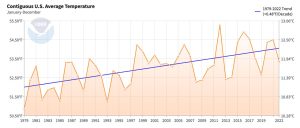The Biden administration on Tuesday announced a proposal that aims to make child care more affordable by capping copayments for working families who receive federal subsidies.
What You Need To Know
- The Biden administration on Tuesday announced a proposal that aims to make child care more affordable by capping copayments for working families who receive federal subsidies
- Vice President Kamala Harris announced the proposal by the Department of Health and Human Services would limit copays to 7% of a family’s income, which the department considers the high-water mark for what is considered affordable
- The Biden administration also is encouraging states, which distribute the money, to eliminate copays entirely for the lowest income families and to make the application process easier, including by accepting online applications
- The proposal comes less than three months before pandemic recovery funding that has kept child care programs afloat is set to expire
Vice President Kamala Harris announced the proposal by the Department of Health and Human Services would limit copays to 7% of a family’s income, which the department considers the high-water mark for what is considered affordable.
The Biden administration also is encouraging states, which distribute the money, to eliminate copays entirely for the lowest income families and to make the application process easier, including by accepting online applications.
And it wants to improve how child care program are paid — in advance of services and based on enrollment — which the White House says should encourage more providers to participate in the program.
The Child Care and Development Block Grant Program provides financial assistance to low-income families, helping more than 900,000 working families and 1.5 million children benefit, the Biden administration said.
“As we know from millions of parents, child care makes it possible to go to work and to be productive during the course of their day,” Harris said. “Child care helps these Americans stay in the workforce, go to job training or secure a paid job and earn money for college or retirement. Child care helps them determine their own future and live with dignity.
“No family should have to choose between high-quality care for their child or to give up their career or put food on the table,” the vice president added.
The proposal comes less than three months before pandemic recovery funding that has kept child care programs afloat is set to expire. According to a study by the progressive think tank The Century Foundation, more than 70,000 child care programs will likely close and about 3.2 million children could lose their care if Congress does not approve new funding.
The Century Foundation also predicts ripple effects — parents paying higher tuition, billions of dollars being lost in tax and business revenue, parents leaving the workforce and the child care industry losing 232,000 jobs.
Biden’s budget proposal would cap a typical family’s child care costs at $10 per day, and it includes funding for universal, free preschool.
The proposal announced Tuesday is subject to a 45-day public comment period before the Administration for Children’s Services reviews the comments and drafts the rule. The Biden administration said it hopes the rule will go into effect next spring. That, however, would mean a monthslong gap between relief for parents if lawmakers don’t step in.
“The president has recommitted — and the administration — to those investments through this budget process,” a senior administration official told reporters. “And so it’s really up to Congress to find the funds that are necessary in order to transfer the investments that are that are durable and large enough to expand access to high-quality, affordable child care in this country,” a senior administration official told reporters.
Harris said the 7% copay cap would, for example, save a family in Montana making $46,000 a year about $80 a month, or around $1,000 a year.
“That money could go to gas and groceries or to fix a leak in their roof,” she said.
The vice president said child care is a personal issue for her. Growing up, a woman, Regina Shelton, who lived two doors down, ran a child care center and became a “second mother” to Harris and her sister while allowing her mother, a breast cancer researcher, to work, the vice president said.
“My mother often said that but for Mrs. Shelton, she would never have been able to do the work that she did,” Harris said. “She would have never been able to contribute as she did to the fight to end breast cancer.”
According to a 2021 survey conducted by YouGov on behalf of Bankrate, U.S. families spend an average of $8,355 a year per kid on child care.
A 2019 analysis by the Center for American Progress found that working families with children under age 5 who pay for child care were spending nearly 10% of their income on it — about 40% higher than what the Department of Health and Human Services defines as affordable. Child care expenses for some low-income families reached 35%, the analysis found.




